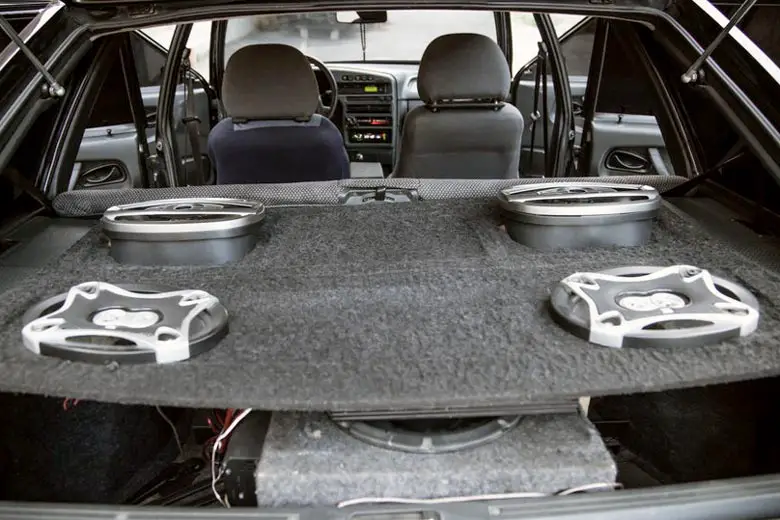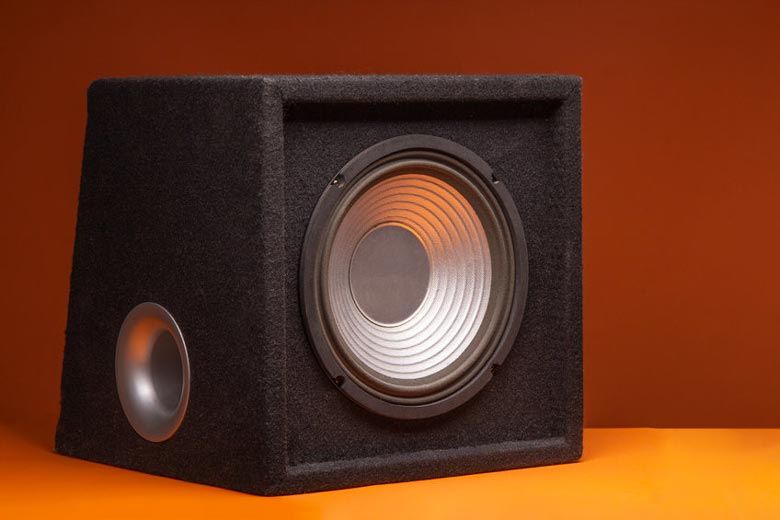Trunk rattle is a common problem encountered by car audio enthusiasts. The sound from subwoofers can cause the entire vehicle to shake, and people can hear it outside the car. Though many people enjoy using subwoofers, trunk rattle isn’t pleasant, and most people want to avoid it when possible.
Here are seven ways to prevent trunk rattle due to subwoofers:
- Check for panel vibrations.
- Apply soundproofing materials.
- Attach a brace.
- Install a high-pass crossover on your subwoofer.
- Seal the back of the subwoofer box.
- Stick with the right size enclosure.
- Invest in a quality set of subwoofers.
Continue reading this article to find simple yet effective ways of preventing trunk rattles from your car subwoofers.

1. Check for Panel Vibrations
Vibrations in any panel can cause rattling sounds, so there may be other areas where rattles manifest themselves besides in the trunk. The first step towards fixing the trunk rattle is identifying where it’s coming from by tapping on different areas of your trunk until you hear the rattle.
After locating the source of the rattle, you’ll have an idea of what needs to be addressed. Here are five tips you can use to check for panel vibrations.
- Check the trunk lid for panel vibrations. If you have a panel with a large surface area like a subwoofer enclosure, this could be the cause of your issues.
- Open up the trunk and put your hand on the vibrating panel.
- Put pressure on the panel to hold it in place (you can use your body weight).
- Install a piece of rubber weather stripping or another sticky strip along the entire edge of the panel where there is contact with the car’s trunk lid. Reattach the panel and close up the trunk.
- Turn on a bass-heavy song and turn up your car’s volume until the rattling starts to appear. You may notice some panels in your vehicle’s interior vibrating or shaking a little bit. Feel around the panels while they’re vibrating and any other panels in the car that seem like they might be moving.
Once you have identified the vibrating panels, it will be easier to decide whether or not to apply soundproofing material to dampen the rattle.
2. Apply Soundproofing Materials
Soundproofing comes in various forms and thicknesses, but most of the products used for automotive soundproofing fall into two categories: self-adhesive sheets, such as Dynamat, or fiber-based mats, such as Noico. You can buy these materials at any auto shop or online.
Dynamat is a heat-activated adhesive material used to seal off car body panels from the inside. Professional custom car designers and builders use it because it works well with the hot temperatures of the engine compartment, and it doesn’t require any special tools for installation.
Applying Dynamat will reduce vibration and make it much harder for sound to escape from inside your trunk.
There are other types of soundproofing materials available — you can spray some on without any glue at all, but Dynamat is very effective and easy to apply for most people.
Check out this video to learn how to effectively apply dynamat to prevent trunk rattle.
3. Attach a Brace
If your subwoofer enclosure is secured to the floor or sides of the trunk, you might be able to prevent the rattles by attaching a brace to the enclosure. The brace will transfer vibrations from the enclosure to your vehicle chassis, preventing them from resonating through trunk surfaces and causing rattles.
It would be best if you had a solid brace to hold up against the vibrations coming from the subwoofer box, but not so strong that it will break down over time.
Many different braces are available for purchase online or at hardware stores. You can find them made out of wood, metal, plastic, or even cardboard. They all work just as well if they are used correctly and properly installed according to the directions.
If you are interested in making a brace for your enclosure, have a look at this video.
4. Install a High-Pass Crossover on Your Subwoofer
A high-pass crossover filters out lower frequencies that cause rattles while allowing higher frequencies to pass through. There are two types of high-pass crossovers: active and passive.
Active crossovers connect between your amplifier and speakers to filter out frequencies below the cutoff frequency.
Passive crossovers connect between your speakers and head unit, filtering out frequencies before reaching your speakers.
Installing a subwoofer high-pass filter is easy if you have the right tools and know-how to use them. There are two ways you can install one: by wiring it into your stock radio or by purchasing an aftermarket amplifier with built-in crossover controls.
Both methods require some basic knowledge of electronics and soldering skills, but they are well worth the effort if you want better sound quality from your system.
5. Seal the Back of the Subwoofer Box
The most common noise source with a subwoofer is air escaping from the back of the enclosure when sound is pushed out from the front. An excellent way to prevent that issue is by sealing off your enclosure’s back.
For this job, you’ll need some acoustic sealant, sometimes called “latex caulk,” which is available at any home improvement store or online.
This sealant is essentially a thick, sticky version of spray foam insulation. Use it to fill gaps around the subwoofer cut out and around the edges of your enclosure where it connects with your car.
6. Stick With the Right Size Enclosure
You should ensure that the enclosure you are using is the right size for your subwoofer. If the box is too small, it will not be able to properly contain the vibrations of the subwoofer, which can cause it to rattle. If it is too big, you will have more room for rattling because there is space.
In some cases, you may find that your trunk still rattles even if you have a correctly sized enclosure for your subwoofers.
This issue usually means that there are not enough dampening materials inside the trunk. You can install sheets of foam or rubber over any areas of exposed metal inside your trunk that are near the enclosure to prevent these vibrations from spreading into other parts of your vehicle.

The most important thing to consider is the size of your vehicle’s trunk and the subwoofer enclosure. Though you can install a smaller subwoofer enclosure in a larger trunk that may not rattle as much as a larger enclosure, it will likely not perform as well and may lack the bass response you want.
There are two primary choices for speaker enclosures: sealed (or closed) and ported (or vented). Each design has its advantages and disadvantages and has a different effect on sound quality.
Sealed enclosures have a tighter and more punchy bass reproduction, while ported or vented enclosures allow for louder, deeper bass reproduction at less precise bass reproduction. Ported enclosures also need more airspace than sealed enclosures.
7. Invest in a Quality Set of Subwoofers
To prevent rattling from occurring, it’s essential to choose a quality set of car subwoofers. This will avoid buzzing, but it will also provide a better quality sound and bass performance.
Invest in quality speakers and woofers as opposed to cheap aftermarket systems. Cheaper subwoofers tend to vibrate more than quality models, frequently making your trunk lid rattle.
But before you do, you might want to read about if it’s illegal to have subwoofers in your car.
Key Takeaways
A rattle-free trunk from your car subwoofer is first about establishing where the rattle is coming from. Based on the intensity of the rattle, this will help you understand the extent to which you should dampen the sound.
A few simple steps to dampening the rattle include:
- Invest in good-quality subwoofers.
- Use braces for your subwoofer enclosures.
- Use soundproofing materials.
